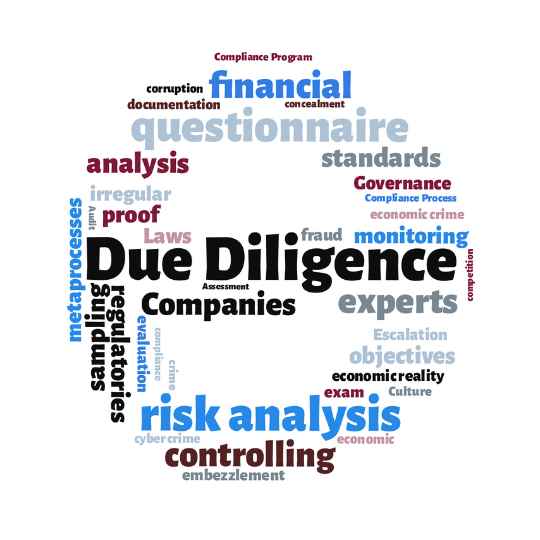
Unlock the Secrets of Real Estate Investment in Canada: Expert Tips for Adding Value to Your Portfolio
Monday Apr 10th, 2023
Unlock the Secrets of Real Estate Investment in Canada:
Expert Tips for Adding Value to Your Portfolio
High-Level Strategies for Success you need to be using now!!
Real estate investment can be a highly lucrative venture, especially in Canada's thriving real estate market. However, with so many different strategies and techniques available, it can be challenging to know where to start. In this blog, we will explore some of the expert tips for unlocking the secrets of real estate investment in Canada and adding value to your portfolio. From developing a comprehensive strategy to staying up-to-date with market trends and focusing on tenant experience, we will provide high-level strategies that you need to be using now. By following these tips, you will be better equipped to make informed decisions and achieve success in your real estate investments.
1. Develop a comprehensive strategy
Real estate investing can be a lucrative and rewarding endeavour, but it also requires careful planning and strategy. Here is a comprehensive strategy for real estate investing:
- Define your investment goals: Before you start investing in real estate, it is important to define your investment goals. Ask yourself questions like: What is your investment horizon? What is your risk tolerance? Are you looking for long-term capital appreciation or regular rental income? Defining your investment goals will help you determine the type of property and investment strategy that is best suited for you.
- Research the market: Before investing in any property, it is important to research the market thoroughly. This includes analyzing the local real estate trends, vacancy rates, and property values. You should also research the potential for growth and development in the area.
- Choose the right property: Once you have identified the market that you want to invest in, it is time to choose the right property. Look for properties that have good potential for growth and appreciation. You should also consider the location, size, and condition of the property.
- Secure financing: Unless you have a significant amount of cash, you will likely need to secure financing to purchase the property. Research different financing options, including traditional mortgages, private lenders, and hard money loans. Be sure to factor in the cost of financing when evaluating the potential profitability of the investment.
- Manage the property: Once you have purchased the property, it is important to manage it effectively. This includes ensuring that the property is properly maintained, addressing any tenant concerns, and collecting rent payments on time.
- Evaluate the investment: Periodically evaluate the performance of the investment. This includes analyzing the cash flow, return on investment, and potential for appreciation. Based on the results of the evaluation, you may decide to sell the property, continue holding it, or make changes to your investment strategy.
- Diversify your portfolio: Real estate investing can be a great way to diversify your investment portfolio. Consider investing in different types of properties, such as residential, commercial, and industrial properties. You can also diversify by investing in different markets and regions.
Real estate investing requires a comprehensive strategy that includes defining your investment goals, researching the market, choosing the right property, securing financing, managing the property effectively, evaluating the investment, and diversifying your portfolio. With careful planning and execution, real estate investing can be a profitable and rewarding endeavour.
2. Conduct thorough due diligence:
Conducting thorough due diligence is critical before making an investment in real estate. Here are some steps to follow to ensure you're making an informed investment decision:
- Research the property and the surrounding area: Conduct a thorough analysis of the property, including its location, condition, and any history of ownership. Also, research the surrounding area, including zoning regulations, nearby schools, public transportation, and crime rates.
- Review financial records: Review financial records such as rent rolls, profit and loss statements, and tax returns to understand the property's income and expenses. Also, review any outstanding debt or liens on the property.
- Inspect the property: Conduct a physical inspection of the property to identify any structural issues or needed repairs. You may want to hire a professional inspector to ensure a thorough inspection.
- Review legal documents: Review legal documents such as the lease agreement, property title, and any legal disputes or claims on the property.
- Check for environmental issues: Conduct a thorough environmental assessment of the property to identify any potential environmental issues, such as hazardous materials or contamination.
- Assess the market: Research the local real estate market to understand current trends, demand, and supply. This information can help you determine the potential for appreciation or depreciation of the property.
- Consider the risks: Assess the risks associated with the investment, including the potential for vacancy, rent default, or unexpected expenses.
By conducting thorough due diligence, you can identify potential issues and risks associated with the investment and make an informed decision. Remember, investing in real estate involves significant financial risk, so it's essential to do your due diligence before making any investment decisions.
3. Build a strong network:
Building a strong network is critical for success in real estate investing. Here are some tips for building a strong network:
- Attend real estate events and conferences: Attend local and national real estate events and conferences to meet other investors, agents, brokers, and other professionals in the industry. These events provide opportunities to learn about market trends, new investment strategies, and meet potential partners or mentors.
- Join real estate groups and associations: Joining local real estate groups and associations is an excellent way to connect with other investors, brokers, and professionals in the industry. These groups often hold regular meetings and events, allowing you to build relationships and learn from experienced investors.
- Use social media: Social media platforms such as LinkedIn and Twitter can be useful tools for building your network. Connect with other real estate professionals, participate in relevant groups, and share your knowledge and expertise to build your reputation and visibility.
- Build relationships with local professionals: Connect with local real estate attorneys, accountants, and lenders to build relationships and get referrals. These professionals can provide valuable insights and guidance on local regulations, financing options, and other aspects of the real estate industry.
- Volunteer in your community: Volunteering for local causes and organizations can be an excellent way to build relationships and connect with other professionals in your community. You may also gain valuable experience and exposure to potential investment opportunities.
- Offer value to others: Build strong relationships by offering value to others in your network. Share your knowledge and expertise, make introductions, and be willing to help others achieve their goals. By building trust and offering value to others, you can establish yourself as a trusted and respected member of the real estate community.
Remember, building a strong network takes time and effort, but it can pay dividends in the form of new opportunities, partnerships, and valuable insights. Stay committed to building your network and continually look for ways to add value to those around you.
4. Identify undervalued properties:
Identifying undervalued properties can be a great way for real estate investors to find opportunities for potentially high returns. Here are some ways to identify undervalued properties:
- Look for properties in up-and-coming neighbourhoods: Properties in areas that are experiencing growth and development may be undervalued compared to similar properties in more established areas. Look for neighbourhoods with new commercial developments, improving infrastructure, and rising property values.
- Find motivated sellers: Motivated sellers may be willing to sell their property below market value, providing an opportunity for investors to purchase undervalued properties. Look for sellers who are facing financial difficulties, have inherited a property, or are looking to move quickly.
- Check property tax assessments: Properties that are over-assessed for property tax purposes may be undervalued. Check local property tax assessments to see if a property's assessed value is significantly higher than its market value.
- Consider distressed properties: Distressed properties, such as foreclosures, short sales, or properties in need of significant repairs, may be undervalued. These properties may require some work to bring them up to market value, but they can provide an opportunity for investors to purchase below-market properties.
- Look for properties with potential for improvement: Properties that have potential for improvement, such as adding square footage, updating the interior, or changing the layout, may be undervalued. Look for properties that have good bones but need some TLC.
By using these strategies, real estate investors can identify undervalued properties and potentially generate higher returns on their investments. However, it's important to conduct thorough due diligence and assess the risks associated with each potential investment.
5. Focus on value-add opportunities
Value-add strategies are techniques that real estate investors use to increase the value of a property and generate higher returns. These strategies involve identifying underperforming properties and making targeted improvements to enhance their marketability and profitability. Here are some common value-add strategies that real estate investors use:
- Renovations and Improvements: This involves updating and improving a property to increase its value and appeal to tenants or buyers. It could include upgrades to the kitchen and bathrooms, installation of new flooring or fixtures, painting, and landscaping.
- Repositioning: This involves changing the use or target market of a property to improve its value. For example, converting an office building into an apartment complex, or repositioning a retail center to target a different type of tenant.
- Increasing Rents: This involves raising rents to market levels to increase cash flow and overall returns. However, this strategy needs to be approached with caution, as local rent control laws may limit the amount that rents can be increased.
- Leasing Strategy: This involves changing the leasing structure of the property to improve cash flow. For example, leasing out unused space or subletting to tenants.
- Adding Amenities: This involves adding amenities to the property to increase its appeal to tenants or buyers. For example, adding a fitness center, pool, or community room.
- Cost Reduction: This involves reducing expenses associated with operating the property to increase its profitability. This could include reducing maintenance expenses or insurance costs.
- Energy Efficiency Upgrades: Making energy efficiency upgrades to a property can increase its value while reducing operating costs. Examples of energy efficiency upgrades include installing energy-efficient lighting and appliances, upgrading HVAC systems, and adding insulation.
It is important to note that value-add strategies come with a higher degree of risk than stabilized property investments, as there is more uncertainty involved in improving the value of a property. However, with proper planning and execution, value-add strategies have the potential to generate higher returns than stabilized property investments.
6. Stay up-to-date with market trends
Real estate investing is a dynamic and ever-changing industry, and staying up-to-date with market trends is essential for success. To stay current with market trends, real estate investors need to monitor a variety of factors that impact the market. Here are the five key factors that real estate investors should consider to stay up-to-date with market trends:
- Economic Indicators: Economic indicators such as interest rates, inflation, and GDP growth can provide insight into the overall health of the economy and impact the demand for real estate investments. Real estate investors should monitor these indicators to stay informed about the broader economic trends that could impact the market.
- Demographic Shifts and Migration Patterns: Changes in population demographics and migration patterns can impact the demand for different types of real estate, such as housing or commercial properties. Real estate investors should monitor these shifts to identify emerging markets and opportunities for investment.
- Development and Construction Activity: Monitoring new development and construction activity in their target markets can provide insight into future supply levels and potential competition, as well as the potential for new development to impact property values. Real estate investors should keep an eye on development and construction trends to stay ahead of emerging market trends.
- Regulatory Changes and Policies: Changes to tax laws, zoning regulations, and environmental policies can all impact the demand for real estate investments and create new opportunities or challenges for investors. Real estate investors should monitor these changes to stay informed about the regulatory environment and identify potential investment opportunities.
- Technology and Innovation: Advances in technology and innovation are rapidly changing the real estate industry, and real estate investors should stay informed about these trends to identify emerging opportunities. For example, investors can leverage new technology to improve property management and tenant experience, or invest in emerging technologies such as blockchain and virtual reality to stay ahead of the competition.
By staying informed about these key factors and adapting to changing market conditions, real estate investors can make better investment decisions and capitalize on emerging opportunities. It's important for investors to conduct ongoing research and analysis to stay up-to-date with market trends and identify potential investment opportunities.
7. Leverage technology:
Technology is an essential tool for real estate investors, and there are several ways they can leverage it to improve their investment strategies:
- Accessing Data and Analytics: Real estate investors can access real-time data and analytics to evaluate market trends, identify investment opportunities, and make informed decisions. This can involve using tools like online research platforms, predictive analytics, or market data analysis software.
- Streamlining Operations: Real estate investors can use technology to streamline property management tasks and reduce expenses. For example, property management software can automate rent collection, maintenance requests, and tenant screening, improving efficiency and reducing costs.
- Virtual Property Tours: Virtual reality and 3D modelling technology can be used to provide virtual property tours, allowing investors to view properties remotely and save time and money. This can be especially useful for international investors or those looking to invest in properties in different regions.
- Tenant Relationship Management: Real estate investors can use technology to manage tenant relationships and improve communication. For example, they can use tenant portals to provide self-service options, automate rent payments, and track maintenance requests.
- Digital Marketing: Real estate investors can use digital marketing to attract and retain tenants. This can involve using social media to promote properties, leveraging search engine optimization (SEO) to improve online visibility, and using email marketing to keep tenants engaged.
By leveraging technology, real estate investors can improve efficiency, reduce costs, and increase returns. Technology can provide real-time data and analytics, streamline operations, and improve tenant relationships, ultimately leading to higher profits and improved investment outcomes.
8. Build a diverse portfolio
Real estate investors can build a diverse portfolio by investing in a variety of properties, markets, and asset classes. Here are some ways to build a diversified real estate portfolio:
Invest in Different Asset Classes: Diversify your portfolio by investing in different types of real estate, such as residential, commercial, industrial, or mixed-use properties. Each asset class has unique risks and rewards, and investing in a mix of asset classes can help mitigate risk.
- Invest in Different Markets: Invest in multiple geographic markets to reduce the risk of market-specific economic downturns. Look for markets with strong job growth, population growth, and a diversified local economy.
- Consider Different Investment Structures: Consider investing in different types of real estate investment vehicles, such as Real Estate Investment Trusts (REITs), real estate mutual funds, or private real estate partnerships.
- Analyze the Risk-Reward Profile: Analyze the risk-reward profile of each potential investment opportunity to ensure that it fits within your overall portfolio strategy.
- Manage Risk: Manage risk by investing in properties with strong cash flow, low vacancy rates, and stable occupancy. Additionally, consider investing in properties with long-term leases or multi-tenant properties to reduce risk.
By building a diverse real estate portfolio, investors can mitigate risk and maximize returns. Diversification can also provide opportunities for capital appreciation, income generation, and long-term wealth creation.
9. Focus on tenant experience:
In today's competitive real estate market, providing a high-quality tenant experience is essential for attracting and retaining tenants. Here are some ways to provide a high-quality tenant experience
- Provide exceptional customer service: Investing in exceptional customer service can help differentiate your property from others in the market. This can include providing timely responses to tenant inquiries, addressing concerns promptly, and offering personalized attention to each tenant.
- Invest in high-quality amenities: Offering high-quality amenities such as fitness centers, coworking spaces, or rooftop lounges can enhance the tenant experience and make your property more attractive to potential renters.
- Embrace technology: Leveraging technology such as smart home systems, online rent payment portals, or virtual property tours can enhance convenience and accessibility for tenants.
- Prioritize safety and security: Tenants value safety and security in their homes, and real estate investors can take steps to provide a secure living environment. This can include implementing security systems, installing adequate lighting, and conducting background checks on potential tenants.
- Focus on cleanliness and maintenance: Maintaining a clean and well-maintained property is important for tenant satisfaction. Real estate investors can prioritize regular cleaning and maintenance schedules, respond promptly to repair requests, and ensure that common areas such as lobbies and hallways are kept clean and tidy.
- Provide clear communication: Clear communication is key to a positive tenant experience. Real estate investors can provide tenants with clear guidelines on lease agreements, rental policies, and maintenance procedures, and keep them informed of any changes or updates that may affect them. Additionally, responding promptly to inquiries and concerns can help build trust and establish a positive relationship with tenants.
In today's competitive real estate market, providing a high-quality tenant experience is crucial for attracting and retaining tenants. By investing in customer service, amenities, technology, safety and security, cleanliness and maintenance, and clear communication, investors can create a positive living environment that tenants will value. This can lead to increased tenant satisfaction, better retention rates, and positive referrals, ultimately helping investors build a strong and successful real estate portfolio.
10. Develop a strong brand:
Developing a strong brand is crucial for real estate investors who want to establish a reputable and reliable image in the market. Here are some steps that can help real estate investors develop a strong brand:
- Define Your Unique Selling Proposition (USP): Identify what sets you apart from other real estate investors in the market. Is it your expertise, your investment strategy, or your exceptional customer service? Your USP should be something that makes you stand out from the crowd.
- Create a Brand Identity: Once you have defined your USP, it's time to create a brand identity that reflects it. This includes designing a logo, choosing a color scheme, and developing a brand voice that is consistent across all your marketing materials.
- Establish Your Online Presence: In today's digital age, having a strong online presence is critical. Create a website and social media accounts that reflect your brand identity and regularly update them with valuable content that your target audience will find useful.
- Network and Build Relationships: Attend industry events and network with other professionals in your field. This will help you establish relationships and build trust with potential investors, partners, and clients.
- Provide Excellent Customer Service: Your brand is only as strong as the level of service you provide. Make sure you go above and beyond to meet the needs of your clients and investors.
- Measure and Monitor Your Brand: Keep track of how your brand is being perceived in the market. Monitor your online reviews and engage with your audience to gather feedback and improve your brand over time.
By following these steps, real estate investors can develop a strong brand that sets them apart from the competition and attracts loyal clients and investors.
Bonus
11. Consider sustainability and green building practices:
In today's world, sustainability has become an important consideration for individuals and businesses alike. Real estate investors are no exception to this trend, as tenants and investors are becoming increasingly interested in properties that incorporate green building practices and sustainable features. In this blog post, we will explore the importance of sustainability in real estate investing and how it can benefit both investors and tenants.
Green building practices, such as using sustainable building materials and incorporating energy-efficient features, have numerous benefits. From reducing energy costs to improving air quality and reducing waste, these practices can have a positive impact on both the environment and the bottom line. Furthermore, incorporating renewable energy sources, such as solar or wind power, can further reduce a property's carbon footprint and increase its appeal to socially responsible investors and tenants.
Real estate investors should consider incorporating sustainable practices into their investment strategy, as it can provide a competitive advantage in the market. Tenants are increasingly seeking out properties that are environmentally conscious and have lower operating costs, and investors are looking for properties that have a strong sustainability profile as well.
In addition to the benefits of sustainability for tenants and investors, there are also numerous government incentives and programs that promote green building practices. These programs can provide financial incentives, tax breaks, and other benefits to real estate investors who incorporate sustainable practices into their properties.
Some of the most common sustainable features that investors can incorporate into their properties include:
-Energy-efficient lighting and appliances
-Low-flow fixtures and water-saving technologies
-Renewable energy sources, such as solar or wind power
-Sustainable building materials, such as bamboo or recycled materials
-Energy-efficient windows and insulation
By investing in properties with these features, real estate investors can reduce their environmental footprint, attract socially responsible tenants and investors, and potentially qualify for government incentives and programs. Sustainability and green building practices are becoming increasingly important in the real estate market. Real estate investors who incorporate sustainable practices into their properties can benefit from reduced operating costs, increased appeal to socially responsible tenants and investors, and potential government incentives and programs.
If you are interested in learning more about real estate investment in Canada or have any questions, please do not hesitate to reach out to me. I would be happy to share my knowledge and experience with you and help you achieve your financial goals. So, take the first step today and get in touch with me to start your real estate investment journey.













